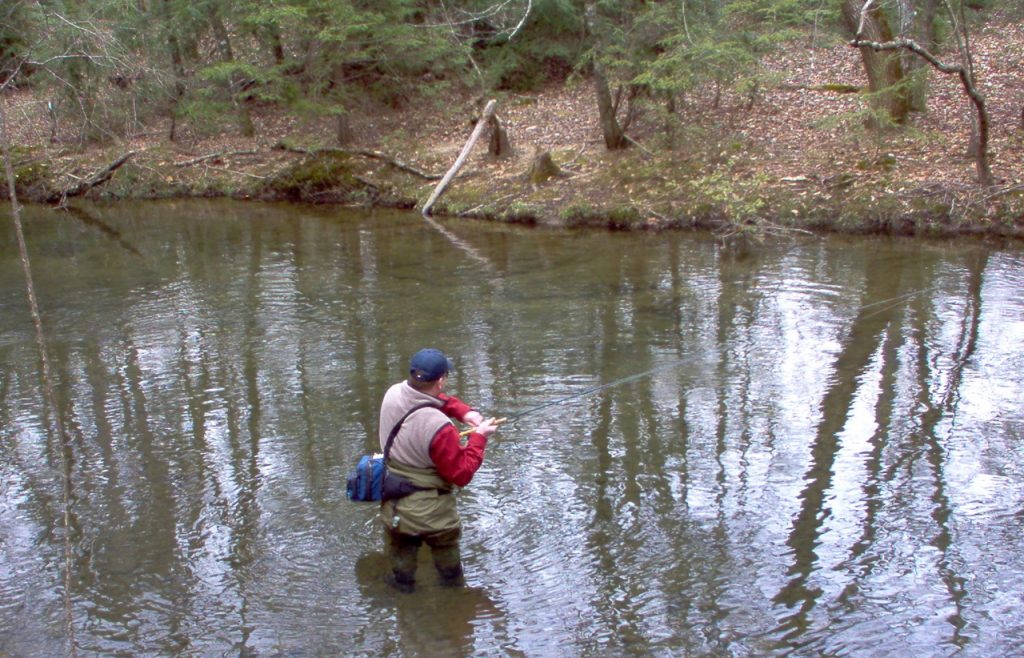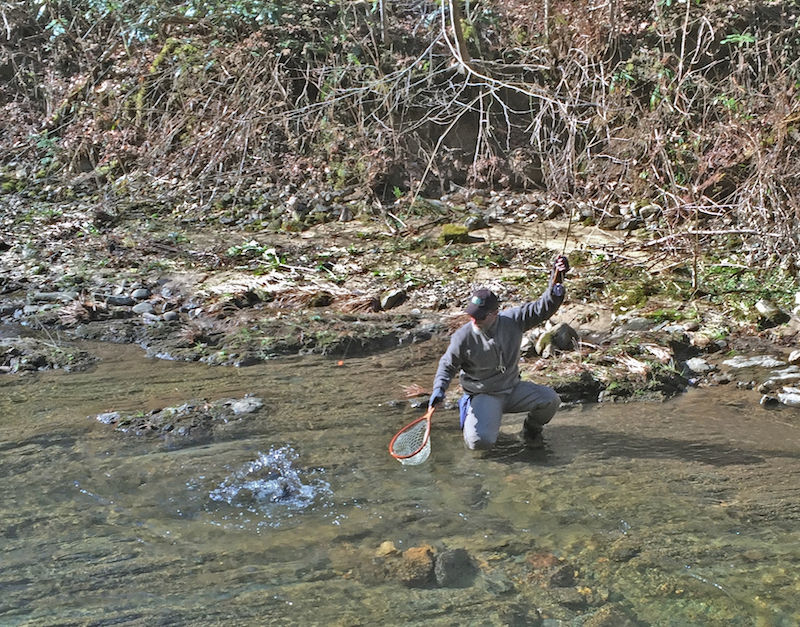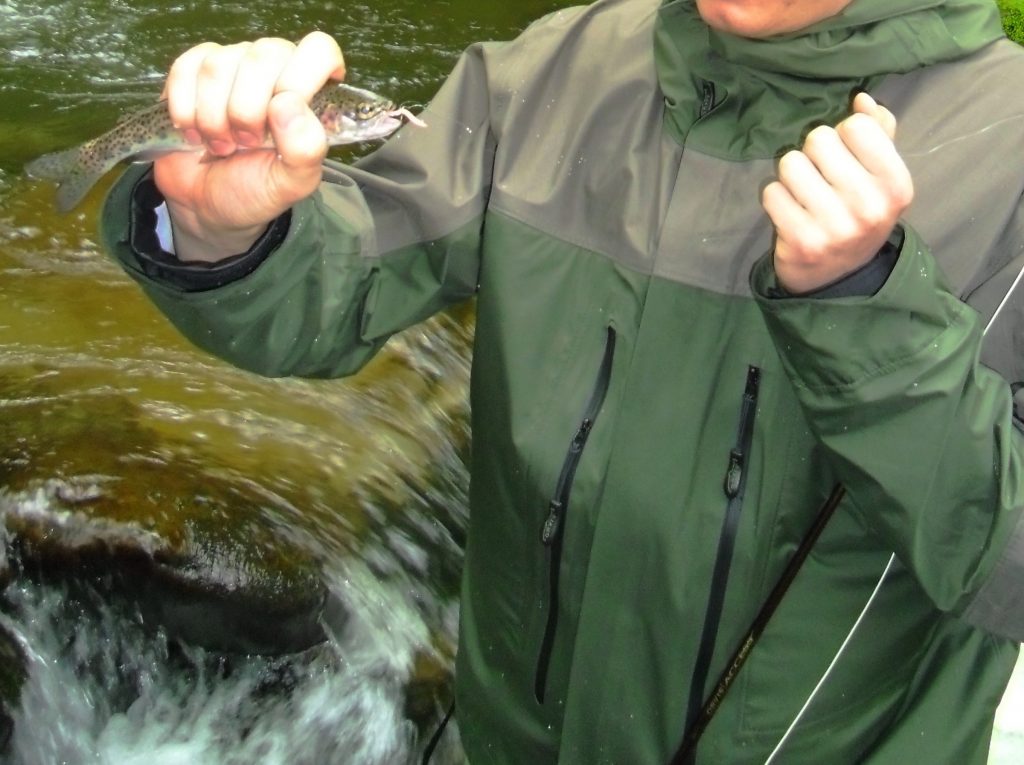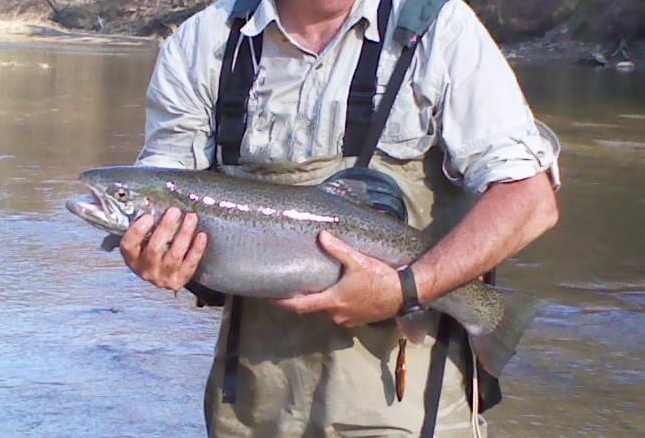
It all finally came together. You made a good cast to the right spot and your fly is drifting down the current for mere seconds before a trout intercepts it. You react quickly with a smooth lift of the rod and the fish is hooked. Maintaining steady pressure, you resist against the trout’s evasive maneuvers and inch him closer to you. Now what?
For many, this is when a panic party ensues in an attempt to wrangle the trout and remove the hook from his mouth. You end up dropping your rod in the water and filling the reel with sand all while tying yourself up in a web of fly line and leader. For others, this may be when they begin a long, slow process of torturing the fish in an attempt for that perfect photo.
Catching a fish should be a fun experience and it should be quick and painless for you and the fish! Here are a few tips to show you how:
Playing the Fish
The first rule here is you want to make the fight as quick as possible. Don’t try to keep the fish on longer than necessary in order to feel it more or hope he jumps. Put solid, steady pressure on the fish with the rod and get him in as soon as you can. This is a stressful experience for a fish. Trying to extend the fight only exhausts the fish and can reduce his chance of survival.

This is especially true with bigger fish. Certainly it will take longer to bring in a large fish, but it shouldn’t be an all day affair. Don’t be afraid to use that flexible lever called a fly rod to put pressure on the fish. You always want to have a bend in that rod and try to do the opposite of what the fish does. If the fish runs to the left, drop your rod to the right and put side pressure on him. If he goes to the right, drop your rod to the left. If he runs straight away, hold the rod straight up.
Try to always have a bend in the rod and never point the rod tip toward the fish. If he pulls so hard that the rod tip is being pulled forward, let him take some line while still maintaining that steady pressure. If you find yourself at a standstill with the fish where he’s not really running or coming to, try to bring his head to the surface. This will usually accomplish one of two things. He’ll either submit and slide right to you, or he’ll make another run and hopefully burn off one last bit of energy so you can land him. Remember that you want to be the one in control – as much as possible! All of this will not only help ensure that the fish will stay on the line, but it will shorten the fight, which benefits you and the fish.
Landing the Fish
I see a lot of people, beginners mostly, bring in line to where the fish is just inches from the tip of the rod. This habit probably comes from fishing with a shorter spin or bait rod. But your average fly rod is 8-9′ long and if you reel or strip your fly line and leader all the way into the rod guides you’re going to encounter three problems.
First, if it’s a large fish that decides to make one last run, the knot connection between the leader and fly line can easily get hung in the guides resulting in a break off. Second, if you pull that much line in, it leaves the fish close to your rod tip and you can’t reach him without sticking your rod in the water or trying to set it on a bank. Not only does that increase risk of damage to your rod and reel, it’s just really awkward. Third, if and when you do get hold of the fish, you don’t have any slack line, which makes it extremely difficult to remove the hook.

Always try to leave at least a little bit of fly line past the tip. To land the fish, reach your rod up and behind you and grab the fish or the end of the leader with your other hand. Once you have it, bring your rod back down and forward and you’ll have slack line for easier hook removal. A landing net makes this process easier, where you just scoop the fish in the net rather than grabbing it. I don’t usually fool with a net in the mountains because your average fish isn’t very big and can be easily managed by hand. I always try to have a net in places like tailwaters where I’m more apt to catch bigger average fish.
Handling the Fish
There’s a reason we don’t see fish walking around in our yard. They can’t live out of water. And the longer we keep them out of water when landing them, the more harm we are causing them. Try to make this process as quick as possible.
I will often not remove the fish from the water at all. I land them as described above but rather than grabbing the line or fish, I will simply clamp the fly with my hemostats. With a little twist of the wrist, the hook usually comes right out and the fish swims away happy and unharmed without ever coming out of the water. You can do the same with a fish that has been netted. Just put the hemostats on the fly while the fish is in the net. This works even better (as does any hook removal) with barbless hooks. I almost always crimp the barbs on my hooks and encourage you to do the same.
The only reason I can think of that you would need to remove the fish from the water is if you’re going to take a picture of it. Actually, you can get some pretty cool pictures of the fish in the water, but if you want to be in it too, than the fish will need to come out of the water – or you’ll need to go in!
Photographing Fish
If you are going to handle trout, it is important to first wet your hands. They have skin, rather than scales, that contains a “slimy” protective coating. Dry hands can remove or damage that coating making them more susceptible to disease. Now back to the obvious statement above, fish don’t live out of the water, so try to do this as quickly as possible.
Don’t hold the fish in one hand while you fumble around to pack or vest looking for your camera. And most definitely don’t walk downstream with the fish so your buddy can take a picture. Preparation is the key here.
For starters, keep your camera in a place that’s easy to get to, not tucked away in your backpack. Try to keep the fish in the water until the camera is out, on and ready. Then grab the fish gently (with wet hands), take your picture and get him right back in the water. Remember you’re not shooting the cover of Vogue. You don’t need ten different poses from the fish. Get one or two quick shots then get him back in the water.
I can’t resist a brief rant here. You don’t need a picture of every fish you catch! I definitely understand getting a couple of photographic memories from the day. I certainly do the same. Maybe get a shot of the two or three bigger ones, or maybe that one that was just a little more colorful. But your Instagram followers don’t need to see fifteen pictures of what looks like the exact same fish. I know. It’s the world in which we live.
Tips for Better Photos

While we’re on the subject of photographing fish, there are a few things to keep in mind that will be better on the fish and will result in a better photo. The first thing is to show the fish to the camera, not your hands. Don’t grip the fish like it’s a baseball bat. The fish won’t love it and you’ll be disappointed in your picture. Instead, gently cup the fish from behind so that you can see as much of it as possible. I recommend one hand for smaller fish and two hands for bigger fish – assuming you have someone else to take the picture.

Try to avoid putting pressure on his fins and certainly try to keep your fingers away from his gills. Hold him right-side up (yes, a lot of people hold them upside down) and try to extend him away from your body a little, rather than pinning him against your body like a guitar.
While I do recommend handling the fish as little as possible, I do suggest holding the fish for a good photo, even if it’s in the net. Many anglers try to hold the line with the fish suspended. This results in a rotating fish and a “Hail Mary” for the photographer, attempting to snap the shot at just the right time in the rotation.
The million dollar question is what to do with the rod. The trendy thing for a while was for anglers to put the rod in their teeth. More recently, folks have taken to resting the rod behind their head on their shoulders. Y’all are stuck with my opinion here, but my opinion is that both of these things look stupid. If you’re near the bank, you can set the rod down. If you’re not, just stick it under your shoulder. But it’s your picture and if you want to stick your rod in your mouth like a dog with a bone, have at it!
Releasing the Fish
Smaller fish tend to be a bit more resilient. Typically, you just set them back in the water and they dart away. Bigger fish, however, tend to need a little more time. They are often tired from the fight and will sometimes want to float on you if you just toss them back in the water. This doesn’t mean that you need to do some weird version of fish CPR that I’ve seen many anglers attempt.

Just find a little slower patch of water out of the main current and set the fish in it. Before you let him go, simply keep a hand on him underwater, gently supporting him and keeping him upright. The fish will soon begin to wiggle his tail and eventually swim away on his own power.

